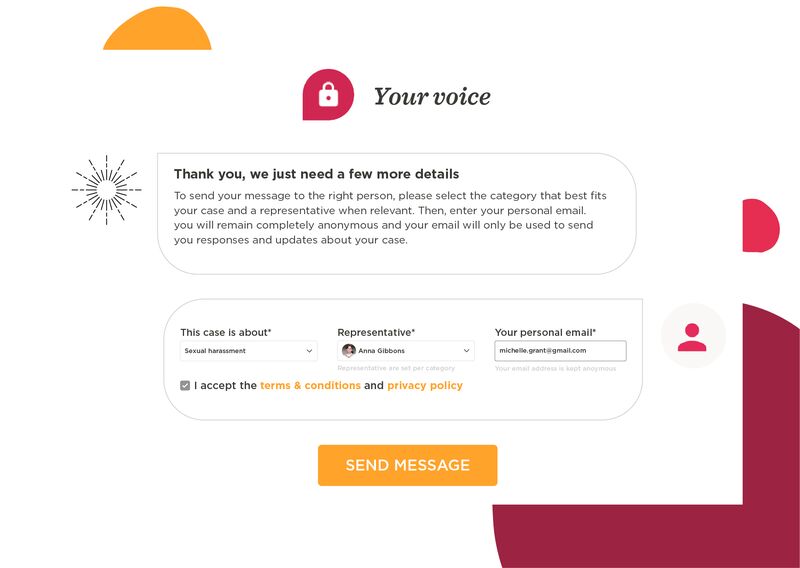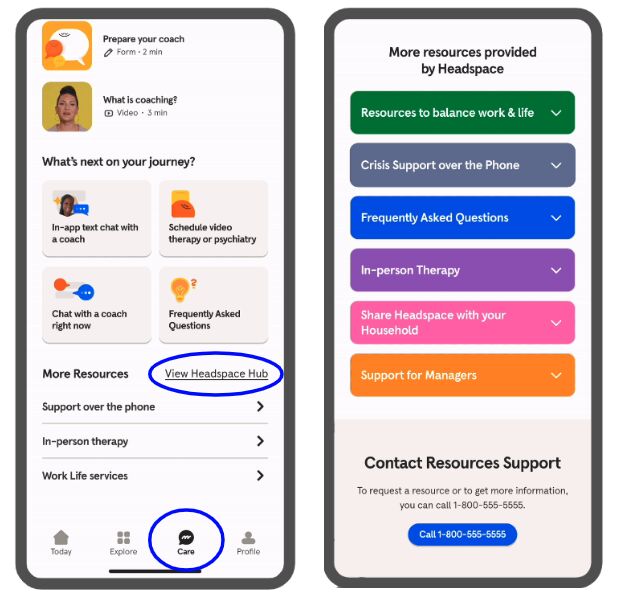Key takeaways
In this article…
The importance of supporting mental health at work
According to the National Institute of Mental Health, an estimated one in five U.S. adults live with a mental illness. It follows that some of your employees may manage a mental illness themselves. Facilitating open communication and providing mental health support in the workplace s is one step toward developing satisfied and loyal employees who feel valued and respected at work.
A note on managing employees’ mental health
It’s not you or your company’s responsibility to “fix” an employee with poor mental health. An employee’s mental health is the result of a complex mix of social, physical, political, emotional, and economic factors that occur both in and outside of work.
While It’s impractical to assume you can “solve” a worker’s mental health concerns, you can develop a workplace that empathizes, supports, and offers resources to employees who are struggling.
How to improve mental health in the workplace
Some of the major steps you can take to improve employee mental health in the workplace include:
1. Secure leadership support
You and your HR department may understand the need to provide mental health resources and cultivate psychologically safe workplaces, but you won’t get far without executive suite support. This support should be more than passive agreement — according to 2024 SHRM study data, 73% of workers reported that their employers profess to care about mental health, but almost half of employers’ actions don’t reflect these statements.
In other words, saying you care about mental health without workplace reform comes off as performative and can even damage your company’s reputation.
Instead, garner buy-in from the top. Share with your C-suite some of the benefits of mental health awareness in the workplace and its impact on retention. And if your higher-ups are concerned with numbers, bring in some of your workforce analytics, including dollars lost from unplanned absences and the productivity boost from overall happier employees.
Once your executives are committed to workplace mental health, have them show it by:
2. Ask your employees what they need
The simplest way to know where to start with mental health in your workplace is to ask. “Surveys are a great place to start, but you have to make sure they are truly anonymous,” says Caitlin Collins, an organizational psychologist and Program Strategy Director at Betterworks. These surveys should also have an open-ended section where employees can add comments.
Collins also emphasizes the importance of regular skip meetings between direct reports and their manager’s supervisors. “Upward feedback and doing that consistently can be very powerful,” she says. These meetings also allow employees to address issues with superiors that they may feel uncomfortable sharing with their direct managers.
Besides anonymous surveys and skip meetings, there are several other ways to learn about the mental health needs of your employees, like:
Most importantly, follow up with these surveys at least once a year to determine if your mental health support truly serves your workforce as your business evolves.
Many HR software platforms offer ways to facilitate employee surveys and feedback collection. Bob, for example, includes a Your Voice feature that allows employees to suggest changes or express concerns anonymously. Because Bob encrypts employees’ identities, workers are free to speak openly about their workplace mental health pain points and even monitor resolution progress.

Not all HR apps have survey options or anonymous suggestion boxes like Bob. Check out some of our favorite surveying and employee engagement platforms if this is your case.
3. Invest in mental health resources and services
Depending on your budget and employee feedback, you should invest in the mental health resources that will impact your workforce the most. At a minimum, ensure your health insurance plans meet the Mental Health Parity and Addiction Equity Act standards, meaning mental health services like therapy and substance abuse treatment receive similar coverage as physical health services.
But don’t let this be the only mental health benefit you offer employees. “[You need to have] a variety [of options since] not every employee is going to jump at the chance to see a therapist,” explains Collins. Offering multiple avenues of support — like employee assistance programs (EAPs), online therapy sessions, and remote or hybrid work options — makes it easier for employees to find the treatment options they need.
Another thing to consider is workplace ergonomics. “Not every employee can work under neon lights in an open space room,” explains Collins. Neurodivergent employees, for example, may do their best work in dark or quiet rooms with fewer distractions and interruptions.
Learn more about the corporate wellness software and other employee benefits offerings.
Additional mental health benefits to offer
If your insurance plan already meets federal requirements, review the options below to expand your mental health offerings:
Some software ticks several boxes. Headspace, for example, provides tools like guided meditations, EAP services, and therapy and psychiatry services in one application that employees can access on their mobile devices.

4. Train employees on workplace mental health
Mental health training is a cornerstone of a psychologically safe workplace. Courses usually focus on:
Collins recommends making these training resources available for employees on-demand after the training sessions. You may even want recirculate training materials semi-frequently, so employees retain this information for longer.
If you feel out of your depth developing and teaching courses on mental health, check your learning management system to see if they offer free courses or templates. Alternatively, services like Coursera for Business provide ready-made mental health training courses. For example, the Psychological First Aid class by Johns Hopkins University prepares employees to support others in crisis.
Training resources
If you’re new to creating a training course, check out some of our learning and development (L&D) resources below to get started.
5. Examine and update your workplace policies
In addition to your company’s mental health benefits, examine your current policies through a lens of inclusivity and accessibility. Are any of them overly restrictive or use language that excludes employees with mental health disabilities? Your policies should provide enough flexibility to accommodate employees in unique circumstances without setting you up for unfair treatment or discrimination claims.
For example, consider modifying a blanket return-to-work policy. Some employees may find it easier to manage emotional or mental conditions at home, like taking necessary medications or working in an accessible environment. Forcing them to return to in-person work could negatively affect their stress levels and limit their productivity.
Consider other ways you can proactively promote mental health through company policies and procedures:
What does successful workplace mental health programming look like?
Successful workplace mental health programming looks different for each organization. Let’s see how a few HR leaders made it work at their company:
We normalize conversations about mental health, encouraging employees to seek help without fear of judgment. […] Offering remote work options, generous time off policies, and dedicated mental health days shows we prioritize their well-being.
[…] The results? Measurable and motivating! Our employee satisfaction survey scores have climbed a whopping 25% since implementing these changes. Absenteeism rates have also dropped by 10%, proving that a healthy workforce is a happy and productive one.
— Tawny Lott Rodriguez: Head of Human Resources at Rowland Hall-St. Mark’s School
Paycom offers a $0 copay for in-network therapy and counseling, which helps reduce financial strains for employees. On-site privacy booths where employees can reserve a quiet space for therapy sessions can help with time constraints and on-site well-being advisors provide guidance and resources to employees working to find the right mental health care.
— Tanner Bergman: Head of Well-Being at Paycom
We integrate mental health support deeply into our operations by providing resources like flexible work policies, access to mental health days, and by using our own platform to offer health and wellness benefits — without stigma.
It’s about creating a culture where it’s okay to say, “I need a break” or “I need help.” This openness isn’t just about preventing burnout; it’s about fostering an environment where everyone feels supported and empowered to bring their whole selves to work.
— Amy Spurling: CEO and Founder at Compt
Mental health in the workplace FAQs
About the author


